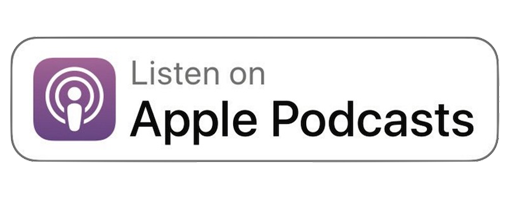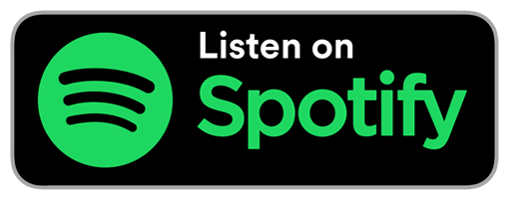Speak Clear English - Enroll Today
INGLÊS & TECNOLOGIA:
O que significa os 10 emojis mais utilizados no WhatsApp?

Fonte: Twitter
Essa imagem se refere a uma notícia no Twitter de 30 de julho de 2016 que diz: WhatsApp now includes emoji flags for England, Scotland and Wales.
Teremos vários artigos que tratam a respeito do tema: TECNOLOGIA aqui no nosso site. Então, se você se interessa por esse assunto, acompanhe os nossos artigos, temos muito conteúdo relevante para compartilhar com você. Não se esqueça de contribuir com as informações dos nossos artigos, se você deseja complementar algum conteúdo, falar sobre algum tempo que esquecemos ou se você quer fazer sugestões deixe nos comentários ou fale com a gente pelo Instagram. Teremos prazer em conversar com você.
O Whatsapp é um aplicativo de mensagens muito utilizado hoje em dia. É uma plataforma que disponibiliza emojis, utilizados como forma de expressar emoções e sentimentos em mensagens. No entanto, é muito importante conhecer os significados desses ícones para evitar utilizá-los de forma inadequada.
O uso de emojis nas conversas do WhatsApp, assim como em outras redes sociais, tem sido muito comum. Prova disso é que, muitas vezes, uma mensagem de texto é respondida apenas com um emoji, como uma carinha feliz ou triste, por exemplo. Existem ainda símbolos, bandeiras e outros formatos de imagens para expressar emoções. O principal objetivo de utilizar os emojis é demonstrar o que uma pessoa está pensando ou sentindo naquele momento. No entanto, é importante lembrar que o significado de alguns ícones pode não estar claro para todos os usuários e, por isso, a interpretação pode ser diferente. Uma curiosidade nesse sentido é que os emojis para usuários de iPhone (iOS), Android e Windows Phone são diferentes.
Quando os emojis são criados e aceitos pela Unicode (The World Standard for Text and Emoji), que é a organização responsável pelo reconhecimento e padronização dessas imagens, cada uma delas ganha um nome e um significado. O idioma, cultura e contexto acabaram alterando o uso desses emojis, e em alguns casos o significado muda completamente.
A seguir, os 10 emojis mais utilizados no whatsapp que você pode ter utilizado errado um dia. Compartilhe esse artigo com os seus familiares e amigos para que eles também possam conhecer esse significados.
1) Emoji com rosto de cabeça para baixo

Por conter um sorriso, pode ser um emoji entendido como felicidade, mas na verdade, ele expressa ironia, sarcasmo ou um piada.
2) Emoji sorrindo discretamente

Este é um emoji que pode ser usado para expressar satisfação por alguma coisa ou por um acontecimento, expressa uma felicidade sutil.
3) Emoji nerd

Um emoji de óculos e com dentinhos, ele pode ser usado para dizer que alguém é inteligente ou dedicada aos estudos.
4) Emoji decepcionado

Mais do que expressar tristeza, esse emoji pode demonstrar decepção com algo ou alguém ou que também mau humor e aborrecimento.
5) Emoji “um pouco menos” decepcionado

Pode ser usado em situações que você ficou chateado com algo ou alguém, ou mesmo quando você está sem respostas para algo.
6) Emoji pensativo

Com um único dedo encostado no queixo e olhando para cima, o emoji pensativo significa que você está pensando ou refletindo sobre algo. Ele também pode ser usado de forma sarcástica seguido da mensagem “Vou pensar no seu caso”.
7) Emoji dinheiro

O rosto com duas cédulas nos olhos e na língua é o famoso emoji ostentação. Pode ser usado para mostrar que você está com muito dinheiro ou que o pagamento está disponível. Também serve para brincar com alguém insinuando que ele está cheio de dinheiro.
8) Emoji revirando os olhos

Revirando os olhos e sem sorriso, este emoji pode ser usado para desdenhar, desprezar algo ou alguém. Pode significar ainda que você acha algo chato ou não gostou de alguma brincadeira ou piada.
9) Emoji com boca de zíper

Esse emoji pode significar “não tenho nada a dizer sobre isso” no sentido de que você não quer se pronunciar ou discutir um assunto. E também pode ser usado para mostrar que você guarda um segredo ou para pedir que alguém pare de falar sobre algo.
10) Emoji espião

Esse emoji de um investigador disfarçado usando um chapéu e uma lupa mostra a intenção de se investigar algo a fundo. Também pode ser usado para dizer que você está observando alguém.
Esqueci algum emoji que você deseja saber o significado? Comente abaixo para solicitar que mais acrônimos ou termos relacionados à tecnologia sejam adicionados à lista.
Pronto para mais inglês? Fale inglês claramente ao ingressar em um dos meus cursos de inglês que mudam sua vida.
Clique em um dos links a seguir para começar a falar um inglês mais claro!
1) Clear English Pronunciation Video Course
2) English Vocabulary – Audio Files & PDF – TOEFL & IELTS
3) Idioms in Conversation
4) Jumpstart Your English Audiobook + eBook
Siga-nos no Youtube e no Instagram:
@studyenglishwithandrea – Postagens diárias de inglês, dicas e vocabulário!
@citizenshiptest – Para quem quer estudar para o Teste de Cidadania Americana.
Fontes:
https://www.techtudo.com.br/stories/2021/08/18/7-emojis-que-muita-gente-usa-errado.ghtml
Até a próxima, Feliz Aprendizado!
Speak Clear English - Enroll Today

Jhessika Nascimento
Director of International Partnerships
Jhessika Nascimento is the Director of International Partnerships for Study With Andrea and lives in Brasilia, Brazil.
Jhessika is a bilingual teacher of English and Portuguese, studying for a Master's Degree in Strategic Management in Information Technologies at the Universidad Internacional Iberoamericana.
Graduation in Letters - Portuguese and English.
Postgraduate in Teaching in Higher Education.
Postgraduate in Risk Management and Cybersecurity.
Postgraduate Executive MBA in Process Management BPM-CBOK.
Postgraduate in Translation and Proofreading of Texts in English.
The following is a TOEFL Reading practice test to help you prepare for the Reading section of the TOEFL test.
Instructions: Read the sample passage below and then answer the questions that follow.
TOEFL Reading Practice Passage
Gorillas are ground-dwelling, predominantly herbivorous apes that inhabit the forest of central Sub-Saharan Africa. The genus Gorilla is divided into two species: the eastern gorillas and the western gorillas (both critically endangered), and either four or five subspecies. They are the largest living primates. The DNA of gorillas is highly similar to that of humans, from 95 to 99% depending on what is included, and they are the next closest living relatives to humans after the chimpanzees and bonobos.
Gorillas' natural habitats cover tropical or subtropical forest in Sub-Saharan Africa. Although their range covers a small percentage of Sub-Saharan Africa, gorillas cover a wide range of elevations. The mountain gorilla inhabits the Albertine Rift montane cloud forests of the Virunga Volcanoes, ranging in altitude from 2,200 to 4,300 metres (7,200 to 14,100 ft). Lowland gorillas live in dense forests and lowland swamps and marshes as low as sea level, with western lowland gorillas living in Central West African countries and eastern lowland gorillas living in the Democratic Republic of the Congo near its border with Rwanda.
(#1) Gorillas move around by knuckle-walking, although they sometimes walk upright for short distances, typically while carrying food or in defensive situations. (#2) A 2018 study investigating the hand posture of 77 mountain gorillas at Bwindi Impenetrable National Park (8% of the population) found that knuckle walking was done only 60% of the time, and they also supported their weight on their fists, the backs of their hands/feet, and on their palms/soles (with the digits flexed). (#3) Studies of gorilla handedness have yielded varying results, with some arguing for no preference for either hand, and others right-hand dominance for the general population. (#4)
The eastern gorilla is more darkly colored than the western gorilla, with the mountain gorilla being the darkest of all. The mountain gorilla also has the thickest hair. The western lowland gorilla can be brown or grayish with a reddish forehead. In addition, gorillas that live in lowland forest are more slender and agile than the more bulky mountain gorillas. The eastern gorilla also has a longer face and broader chest than the western gorilla. Like humans, gorillas have individual fingerprints. Their eye color is dark brown, framed by a black ring around the iris. Gorilla facial structure is described as mandibular prognathism, that is, the mandible protrudes farther out than the maxilla. Adult males also have a prominent sagittal crest.
A gorilla's lifespan is normally between 35 and 40 years, although zoo gorillas may live for 50 years or more. Colo, a female western gorilla at the Columbus Zoo and Aquarium, was the oldest known gorilla at 60 years of age when she died on 17 January 2017.
Questions
1. According to the passage, gorillas can live in
a. a variety of altitudes.
b. several different countries in Africa.
c. thick forests.
d. lowland forests only.
2. All of the following is true about gorillas EXCEPT
a. they primarily eat smaller animals.
b. they live in a forest habitat.
c. their genetics are similar to humans.
d. their diet consists of vegetation.
3. Look at the word predominantly in paragraph 1. The word predominantly in this passage refers to
a. impulsively
b. unfortunately
c. mainly
d. lastly
4. Look at the word inhabits in paragraph 2. The word inhabits in this passage refers to
a. lives in
b. protects
c. goes
d. works
5. The author implies that
a. most gorillas prefer using their left hand over their right.
b. gorillas rarely walk on their knuckles.
c. gorillas regularly walk upright for long distances.
d. studies haven't solidly proven which hand gorillas prefer using.
6. Why does the writer mention that the eastern gorilla also has a longer face and broader chest than the western gorilla?
a. To validate the importance a broad chest in western gorillas
b. To define the meaning of "broad"
c. To highlight a physical difference between types of gorillas
d. To demonstrate that most gorillas are identical in physical build
7. Which of the following statements is true for BOTH eastern and western gorillas.
a. Both eastern and western gorrilas are brown with red foreheads.
b. Both eastern and western gorrilas have unique fingerprints.
c. Both eastern and western gorrilas have thin hair.
d. Both eastern and western gorrilas have light brown eyes.
8. In Paragraph 3, look at the four numbers (#1, #2, #3, #4) that indicate where the following sentence would be added to the passage.
Such a range of hand postures was previously thought to have been used by only orangutans.
Where would the sentence best fit?
(View all the correct answers below.)
Great job! If you're ready to take your TOEFL preparation to the next level, go to StudyWithAndrea.com/TOEFL.
Answers: 1. d 2. a 3. c 4. a 5. d 6. c 7. b 8. #3
Click on one of the following links to start speaking clearer English!
1) TOEFL MASTER CLASS
2) free mini-course "punctuation mistakes to avoid"
3) Clear English Pronunciation Video Course
4) English Vocabulary - Audio Files & PDF - TOEFL & IELTS
About Andrea
Andrea Giordano is the founder of StudyWithAndrea.com and has taught more than 1,000,000 students from 180 countries. Andrea holds a Master of Education (TESOL) from Shenandoah University, and is the former Executive Director of TESOL and ESL programs at Campbellsville University. Andrea is a proven leader in online English teaching and is driven by her passion to help you speak English clearly.





